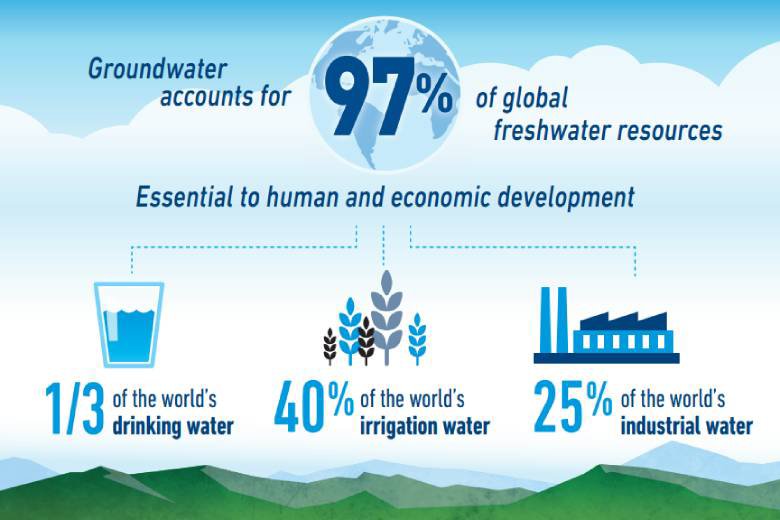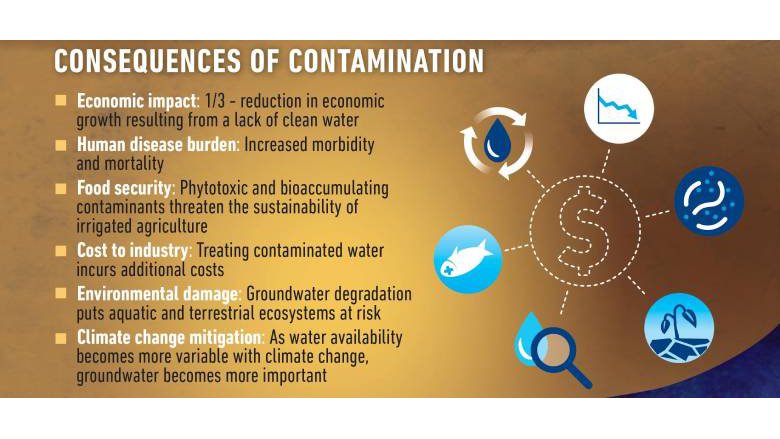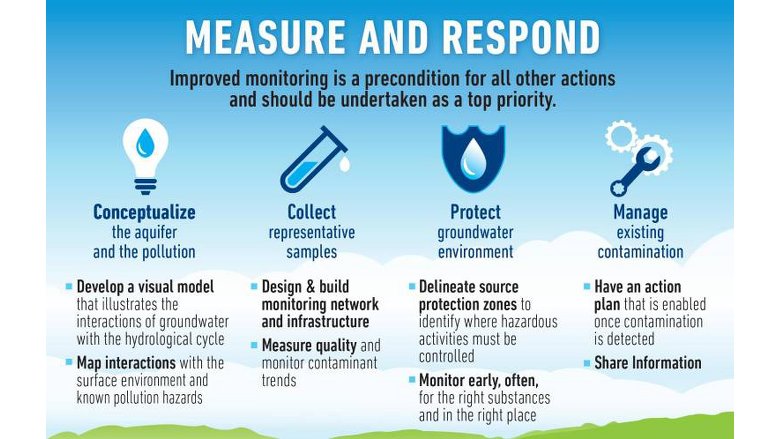It has been said that the challenge of managing groundwater is not unlike the parable of the blind men and the elephant. Tasked with conceptualizing an elephant through touch alone, each man feels a different part of the large body, and ultimately, none are able to grasp the full reality of the animal. While groundwater is arguably the most important source of water on the planet, accounting for 97 percent of all freshwater on earth, the fact of its being hidden from view creates a cascade of challenges for its sustainable use and protection. The result is that groundwater quality management is almost universally neglected until the human and economic costs become too obvious to ignore.

STORY HIGHLIGHTS
- Groundwater, which accounts for 97 percent of global freshwater resources, is essential to human and economic development, but its contamination is more extensive and harmful than previously thought.
- Groundwater quality management is almost universally neglected until the human and economic costs become too obvious to ignore, even though the challenge and cost of cleaning up polluted groundwater, or treating it in perpetuity, is far greater than protecting it in the first place.
- A new publication, "Seeing the Invisible – A Strategic Report on Groundwater Quality," aims to equip readers, specialists, and non-specialists alike to protect and manage this vital resource.
A new World Bank publication, Seeing the Invisible – A Strategic Report on Groundwater Quality, rings the alarm bell about the status of the waters beneath our feet. Research conducted in the last half-century has revealed that contamination of groundwater resources is far more widespread and harmful than previously believed. Additionally, the ever-increasing contamination by anthropogenic pollutants — those caused by human actions, including by chemicals that did not exist or were barely recognized as contaminants a few years ago — pose problems on a scale that is often not appreciated.
When groundwater is compromised, the consequences for human health, agriculture, and the economy are far reaching and can span generations, with disproportionately large impacts for the global poor. And as water variability increases with climate change, groundwater’s importance as both a source and store of water will increase.
On top of this is the growing realization that, once polluted, the restoration of aquifers to a state fit for use is difficult, expensive, and very slow. The intergenerational human and economic costs of what are avoidable phenomena are measured in hundreds of millions of lives and hundreds of billions of dollars.
First, people tend to distrust what they cannot see. They find it difficult to sense how much water is available, let alone how its quality varies with location and depth. For many, aquifers are challenging to visualize. Second, water resources management is too often compartmentalized with technical specialists managing surface water, groundwater and land planning as separate disciplines; and water quality largely considered the domain of laboratories. Third, most water resources managers and administrators tend to lack expertise in groundwater and have limited connection with the private sector and utility stakeholders who are the main groundwater users.
The Seeing the Invisible report addresses these issues by demystifying what is happening below the surface of the earth and provides practical guide for protecting this most vital resource, including how to:
Improve groundwater quality monitoring — a precondition for all other actions that should be undertaken as a top priority — through proper aquifer characterization, baseline measurement, and following monitoring and management best practices.
Reform legislation so that groundwater protection measures are established as part of legally binding planning and land-use controls.
Strengthen institutions to bring together the different water management disciplines and better accommodate both groundwater and water quality more broadly by providing adequate budget, proper recruitment, and training matched to the needs of management objectives.
Prevent pollution from occurring in the first place through the establishment of source protection zones around groundwater abstraction points.
While transforming every decision maker whose sphere of influence impacts groundwater into a subject matter expert over the course of one report is not practical, equipping each reader with the ability to investigate the connections between the seen and the unseen, is. The report provides decision makers with a set of tools and approaches to conceptualize, examine, and develop an informed understanding of groundwater, even without knowing all the technicalities. With groundwater on the global agenda as the theme of World Water Day 2022, the benefits of informed and inclusive engagement have never been greater.




